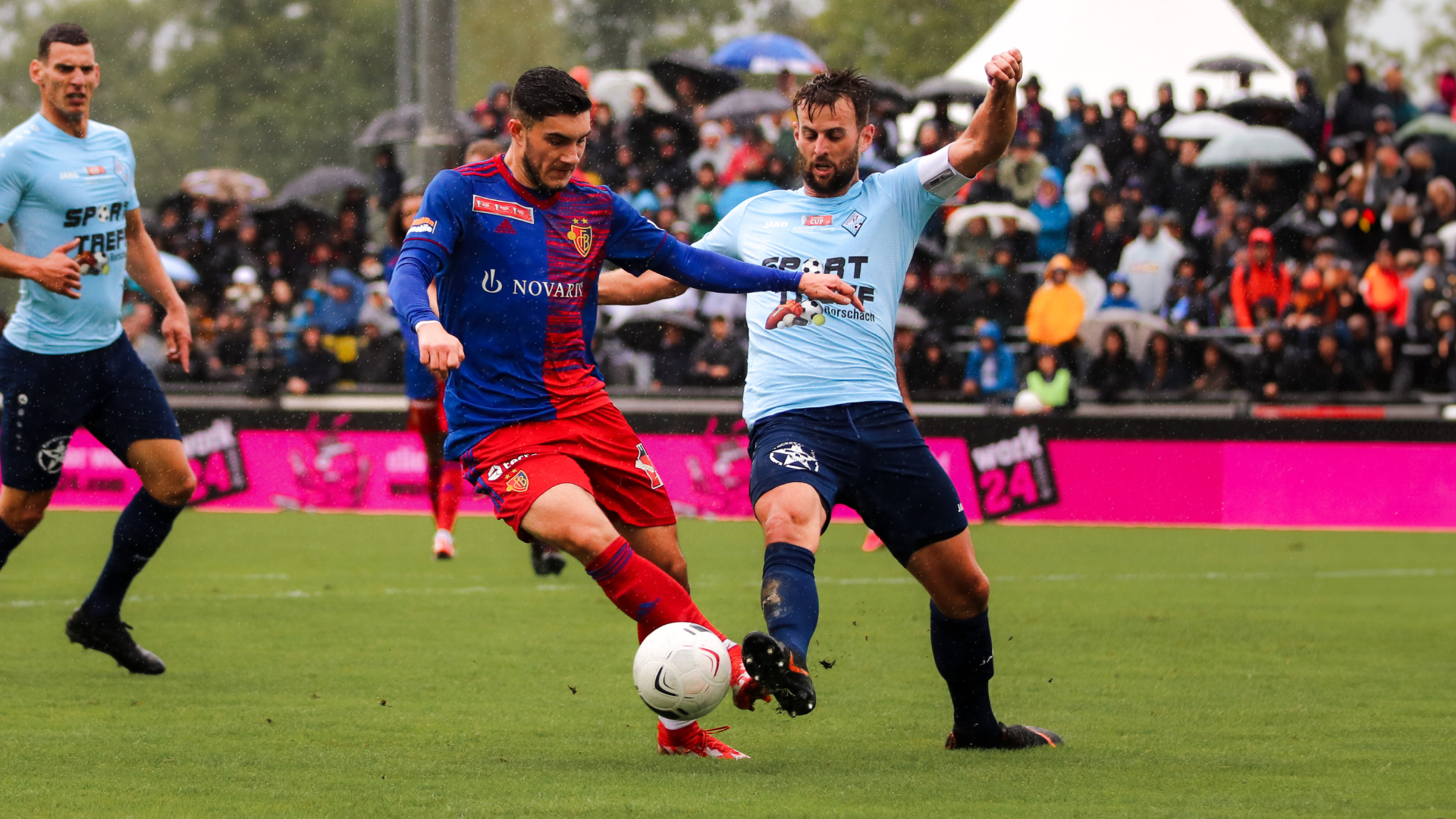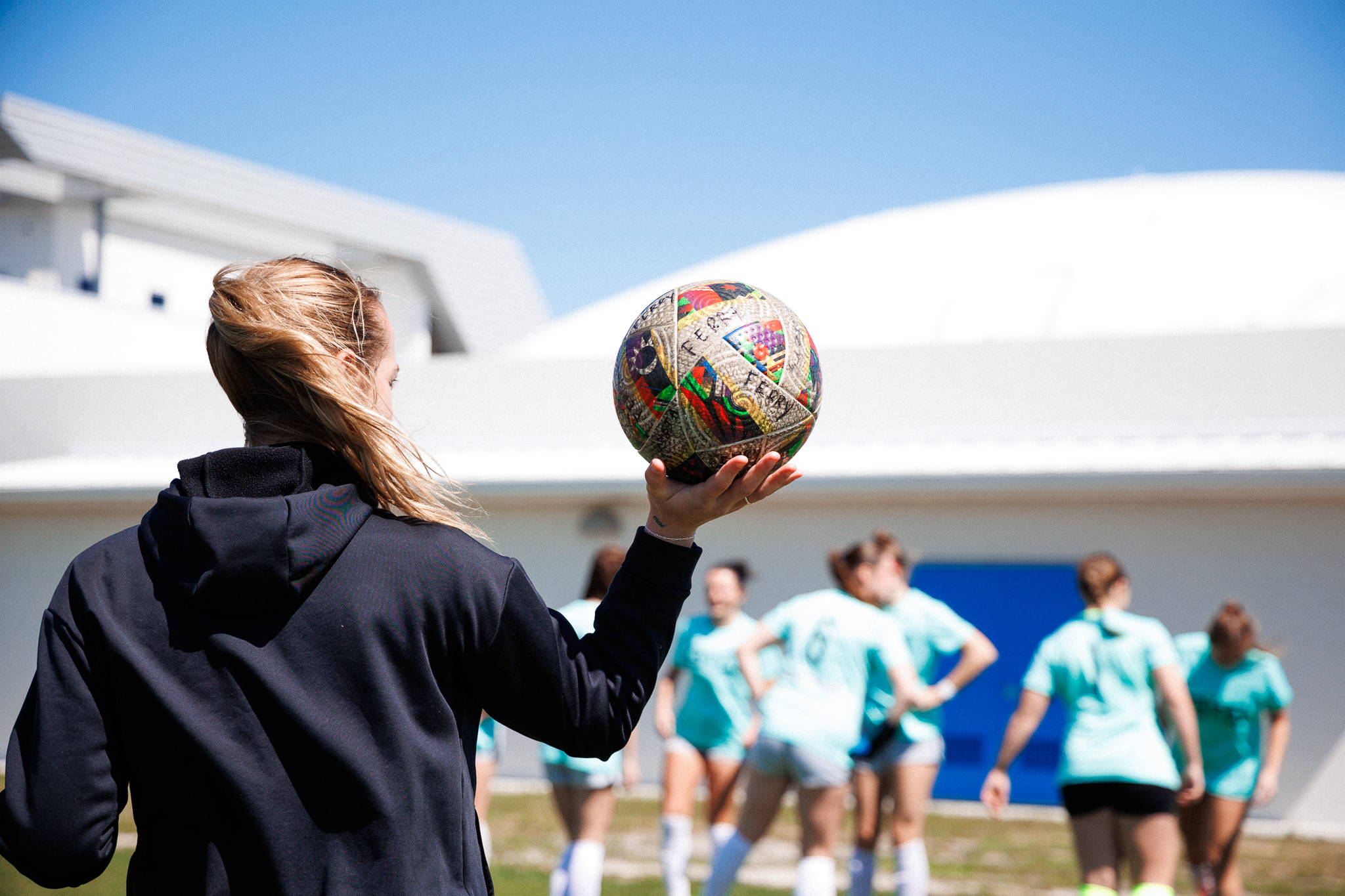The Pro Project: Developing the Next Generation of American Players
Frederik Hvillum

With a clear vision and bold ambition, The Pro Project is working to inspire the next generation of American soccer players to elevate their game and challenge the world's best. Despite the country’s rich sporting heritage in other sports, the global game of soccer is now being pushed to new heights—and the potential has never been greater.
“Our North Star, our guiding mission, is to support the American football landscape and help make the US one of the best footballing countries in the world.”
These are the confident words of Mike Soboff, founder of TheProProject, as he reflects on the growing passion for football across the United States when Veo meets him at Woburn Memorial High School, MA, before a training session.
Mike Soboff started the TheProProject after his own career, where he played collegiately and then professionally, first in Israel and later in North Carolina in the USL. Reflecting on his own experiences, Soboff realized he had lacked the kind of environment that could have helped him develop more during his formative years.
As he traveled and met different players, he became increasingly aware of the stark contrast in resources, culture, and community that existed around football in Europe and South America compared to the United States.
“Surely, we could create something like that here,” he thought, recognizing that plenty of people in the U.S. shared a love for the game. After his playing days ended, Soboff spent some time working in software, but it didn’t take long for him to realize that his true passion lay elsewhere—helping the next generation of players achieve a higher level of success than he ever had.
This desire to support and augment the pathway for young American footballers became the foundation of his mission with TheProProject, which he has run for seven years.
“We provide an environment where they can get supplemental training with the best players in the region regardless of the club they play for or school they attend. We're not telling them to play in a specific system like a 4-3-3 or teaching them specific tactics. That’s the job of the clubs, and they do a great job of that. We focus on helping them work on their individual development,” Soboff explains.

Most of the players in The Pro Project are already associated with clubs or in college and have been part of the program for several years. The idea is that when they have free time, and it doesn’t conflict with their other commitments, they can come to The Pro Project for extra training.
“We’ve worked with players who’ve gone on to play professionally, in the MLS and USL Championship. But a big part of what we do is help with college recruitment. We organize showcase games in the summer, invite college coaches to our training sessions, and host mini-camps led by college coaches to give the kids more exposure. Our goal is to support their development without conflicting with what the clubs are doing.”
“We’ve grown from quite a bit from our founding seven years ago. Some have signed professional contracts, and others have gone to top colleges like Duke, University of Louisville, Wake Forest, and Harvard.”
From the outside, it might seem confusing that players train with their club and attend The Pro Project.
“Once they see that it’s about getting high-level kids together to improve, it makes sense. It’s really about creating more high level environments for American players to play and develop,” Soboff says.
The Holistic Approach with the Center of Excellence
It’s not just football that Soboff focuses on in his work with The Pro Project. During the COVID pandemic, the Center of Excellence emerged. They developed a curriculum that focuses on individual development without conflicting with the players’ club schedules. The Center of Excellence grew from an idea during the pandemic into a full-time program that combines top-level football and athletic performance training with a full time educational program that prepares student-athletes for success on the field and in the classroom.
“That’s when I realized how much more we could impact players with additional training. I wanted to create an environment where the best players could receive more individualized training, similar to the setups in Europe,” Soboff explains before discussing the differences between youth football in the U.S. compared to Europe.
Integrating daily football training with a curated academic program that is designed for the lives of high performing footballers, ensures players grow as athletes and maintain their education. This structure allows players to balance rigorous training schedules with their schooling, offering a more holistic approach that mirrors European professional setups.
“In countries like England and Denmark, players go full-time with football at 16, but here, kids graduate at 18, and academics are a big part of their future. So the idea behind the Center of Excellence was to create an environment that develops world-class people – in football, academics, and life.”

“No reason why the US can’t be one of the top developmental nations in the world”
“I think the US is getting better. With more resources being put into soccer, there’s no reason why the US can’t be one of the top developmental nations in the world.”
"I believe that within a short time, programs like TheProProject will exist across major cities. Kids want to play more, aspire to higher levels, and make a career out of football. I think it’s just a matter of time before the US becomes one of the top countries in football development.”
One resource The Pro Project utilizes is sideline video technology. Unlike many others, The Pro Project doesn’t use video technology for matches, as they don’t play any, but highlights the players’ individual successes, whether it’s a nine-year-old doing something amazing or a graduate from TheProProject scoring for the New England Revolution’s first team.
“Video allows us to capture and celebrate those moments. It also helps with film analysis, where we can show players what they need to work on. It’s not always easy to get everything across in a 90-minute session, but through video, we can review tactical, technical, and even body language aspects to help players improve,” Soboff expresses.
Providing More Tailored Feedback with Veo
The Pro Project has had access to this technology for several years and uses it across all age groups. The role of the technology varies depending on the age group.
“We review the training sessions weekly with the players in our programs. With the younger kids, we ask them to pick a role model and compare their own clips to the professional players they admire. For the older kids, it’s more focused on their individual development plans,” Soboff explains, laughing as he recalls the early training sessions with the Veo camera on the sidelines.
“Kids would do something and point to the camera, saying ‘Veo, Veo!’ because they knew they were being recorded. Over time, they got more familiar with it, but I think having the camera on naturally increases their focus and intensity, which is a great benefit for the session.”
“We definitely prefer Veo. The interface is easy to use, the cameras are simple, and the overall ease of use has been great for us over the years. It’s easy to share and review footage. Families can just share a link, and we can provide more tailored feedback.”
“By combining game footage with training clips, we can create a complete picture of where the kids are at and what they need to work on,” Soboff ends.




